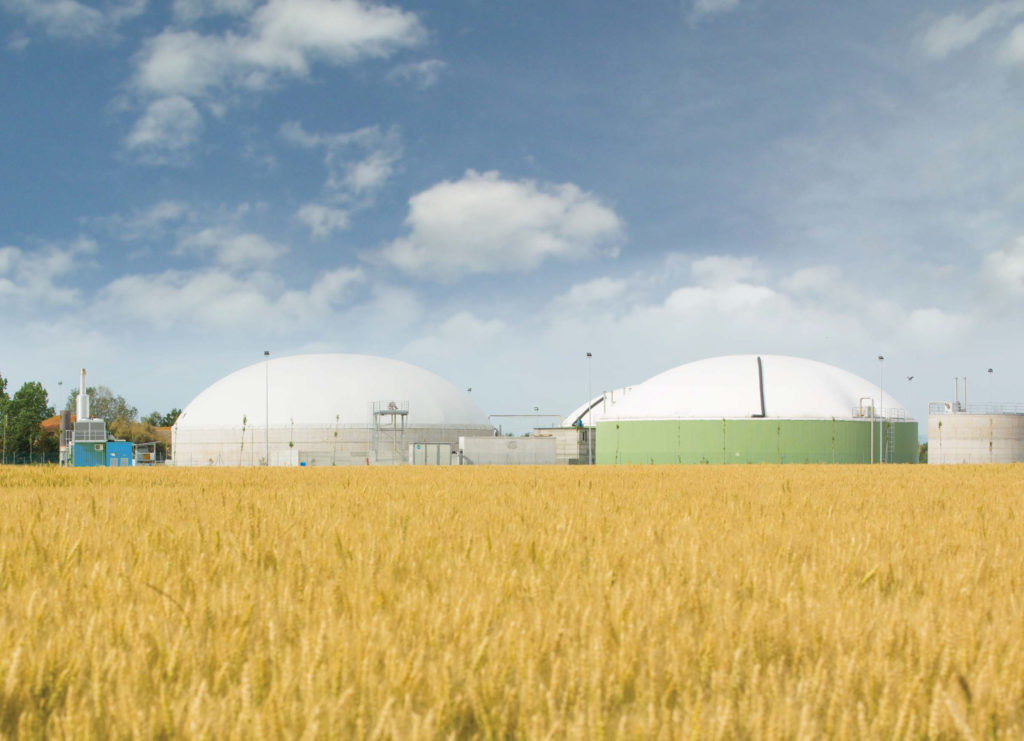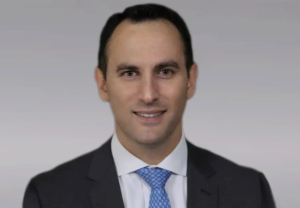We recently sat down (virtually) with Dynamo Energy Hub Member Christopher Galle, Chief Operating Officer of Bioenergy Devco. We asked Chris about Bioenergy Devco, what problems they’re looking to solve, what sets them apart, and what their future looks like. Check out the interview below to learn more.
Could you tell us a little bit about your background and how you got involved with Bioenergy Devco?
I spent a little more than 15 years in the investment banking/ private equity space. Then I got introduced to the company by a good friend who was part of the original investor group through Sagewind early in the company’s development. He knew that I was looking to get out of banking and came to me with this opportunity to work with a company that was growing pretty rapidly and had the tiger by the tail as far as the opportunity goes. He suggested that they needed somebody with investment and financial experience to come in and help them grow the company and really take it to the next level. So that was my introduction to Bioenergy Devco.
What is Bioenergy Devco and what problems are you looking to solve?
We design, construct, operate, and finance anaerobic digestion systems in the United States. We have a partnership with BTS Biogas, which is a 25-year-old Northern Italian company that designs, constructs, and operates anaerobic digestion systems. They’ve built more than 220 facilities (I think), mostly in Europe. Globally, they have some in Asia and South America. They have a stellar track record of constructing and operating these facilities. The problem that we are looking to solve in the United States is really around environmental and economic issues associated with disposing of organic materials. There is a bit of anaerobic digestion that has taken root in the United States, but it has been mostly focused on the biogas production and the value of the methane. What we are looking to solve is more of an organics recycling issue that exists all over this country, but particularly in areas of high population density where you have lots of food and agricultural waste.
Who do you work with? Who are your clients and what benefits do you offer to them? What sets you apart from other solutions in the space?
You know what’s interesting about Bioenergy Devco and the anaerobic digestion industry? The incredible span of a broad array of clients. On one side of it, you’ve got feedstock suppliers who are producing organic residuals. This would be agricultural companies: farmers, ranchers, poultry producers, etc. You’ve also got food processors that are taking the raw ingredients and processing them into ready to eat foods: things that you find on your grocery store shelves or in your restaurants. Then, you also have your large institutions, such as universities with large student populations or large corporate campuses, where you have lots of people consuming food everyday. They have quantities of localized organics that are being disposed of by either going to the landfill or going to an incinerator, which is obviously not sustainable. Similarly, you have energy providers who are looking to decarbonize their network, such as utilities, pipeline companies, and energy companies who are looking for green energy solutions to add to their portfolio. Simultaneously, you have communities who are looking to solve local environmental issues and looking for clean energy solutions themselves. What’s interesting in particular about anaerobic digestion is that solution is really addressing all of these issues. You’ve got local communities, governments, and local businesses who want to better manage organic residuals and energy providers in these same regions who want products to reduce greenhouse gas impacts. At the core of what we do is solving those environmental problems and those sustainability problems. What is great about it is that we do it in an economically sustainable way, as well.
What sets you apart from other solutions in the space?
We can provide solutions that are more local than the less sustainable solutions. The idea here is that you can’t put a landfill next to a residential community. The impact is too negative. But in the recycling business, what comes in must go out. Here, we can locate in a closer proximity to our clients, providing local sustainable solutions that are environmentally-friendly. Also, our ability to be more co-located allows us to be economically equal or better than alternatives. The last thing I will mention on this is something that has come up recently in 2020. In addition to being more sustainable, environmentally-friendly, and economically viable, it is also actually a more resilient system. Because you are able to locate in the local area, you have less concerns about transportation, which can really break down in a year like 2020, where we experienced a pandemic. Maintaining those systems of transporting organics over long distances when you start running out of drivers can be problematic. So, having a local solution provides resiliency for these systems. This is an added benefit that no one was really focused on prior to 2020. It has really helped our pipeline as we talked to potential clients about how we can better serve them. This has been a new issue that has come up in the last 12 months.
What sets us apart from the rest of the anaerobic digestion market, at least in the United States, is that a lot of it has been focused on gas production. We are really focused on the co-digestion and the organics recycling. We can thank BTS Biogas for their experience and track record.
How did 2020 go for you? Did you have any victories and milestones that you would like to highlight?
As far as 2020 goes, it was a very transformative year for us. We acquired our first operating facility in Delaware as part of the transaction we did with Perdue Farms, one of the largest poultry producers. We were able to establish a long term partnership with them, which is really the anchor for the beginning of our business. We also began construction on our second project, which is in Maryland at Maryland Food Center Authority. We were able to enter into a number of major partnerships with energy companies such as, Chesapeake Utilities. This is a partnership we started in June, where they will join us on the renewable natural gas side of things. It has really been a year of establishing major partnerships and laying the foundation for growth, as we try to execute on our strategy. There is one thing I would like to mention. In 2020 ,we were really focused on and happy with the development, as we started to establish a lot of community partnerships. These are particularly in the regions where we are most active right now, which are Maryland and Delaware. We have a partnership with the University of Delaware to advance soil science. Also, there is a program there, where we started partnering with community garden clubs, 4-H clubs, and others where we are able to donate the great soil products we produce. It really gives us a very organic way to engage and find ways to partner with our community to make sure that we are not just focusing on the economic landscape, but also the community as well.
As you are looking at the year ahead of you, what are you most excited about for 2021 and are there any new frontiers that you are tackling this year?
This year is really about execution. Last year, we focused on laying that foundation for our company to execute on our strategy and this year is about executing that strategy. We are going to be commissioning between two to four projects in Delaware and Maryland, which is really exciting. We are also going to get those biogas plants up and running. The development of those projects is taking place over the course of 2021. But one of the things we saw in 2020 was a real acceleration of our medium-term pipeline. Our medium-term pipeline really accelerated last year and that was really exciting because that is the second phase of our projects across the country. This is in large part because of issues around resiliency and people paying attention to their operating cost structures in the markets that we had last year. Opportunities for better sustainability on the organic residual and energy sides of things, along with building up that renewable aspect of energy portfolios got a lot of attention. We were also able to accelerate some of the projects that we thought might have taken a little bit longer to develop, so getting those projects into a construction phase this year is really going to be an exciting part of the project execution phase for us and accelerating the strategic objectives that we’ve set.
Aside from your day to day work, what are some of the key trends in the energy space that you are currently watching and see as potentially transformative?
We obviously have a new administration in place and I have heard lots of opinions around what’s going to come out of that. We are not banking on any one particular outcome on the political side, but there is certainly opportunity there. One of the things I’ve heard about very recently that is a bit different, but tangential to what we are doing is the discussion around what’s being called green hydrogen. We produce renewable natural gas, which is methane and that is a great clean burning fuel produced in a sustainable way without using any fossil fuels. There has been a lot of discussion about even moving towards a cleaner burning fuel, which would be pure hydrogen. The idea of being able to take renewably generated methane and convert it into a perfectly clean fuel, like hydrogen, is very interesting and I have my eye on that market as a potential area for demand for the energy we are producing. That’s pretty exciting and might even be the next generation of energy. We think of our business as being in the RNG space but there are a number of opportunities for the renewable natural gas to be used in a clean energy economy. We really become embedded in that circular economy in a number of forms. Watching that market evolve and diversify is pretty exciting. There is no “one solution” and we are looking to incorporate other energy solutions like solar and geothermal in our own facilities. Watching the development of that market across the various types of clean energy and renewable energy is an interesting thing we have our eye on.




